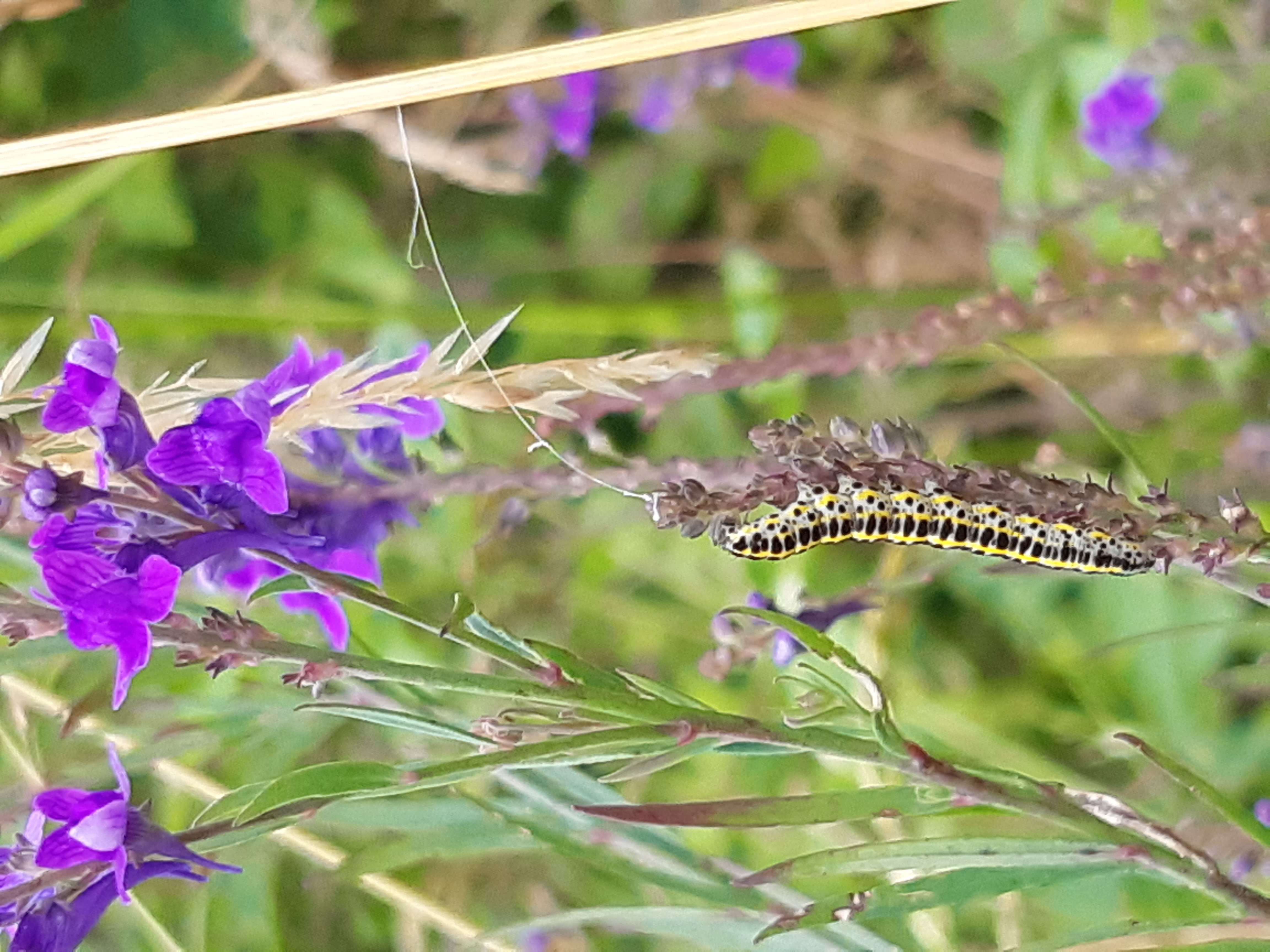
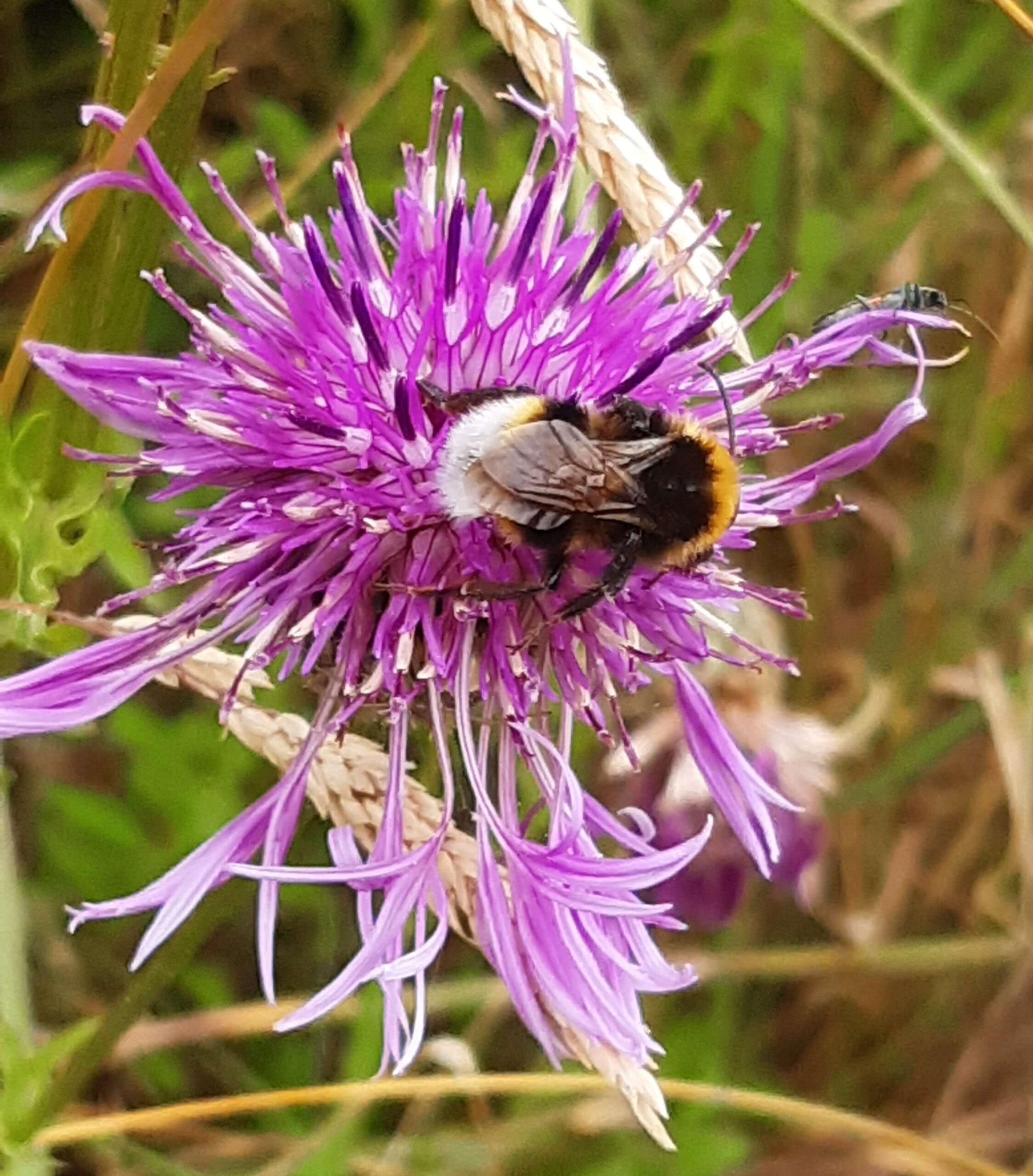
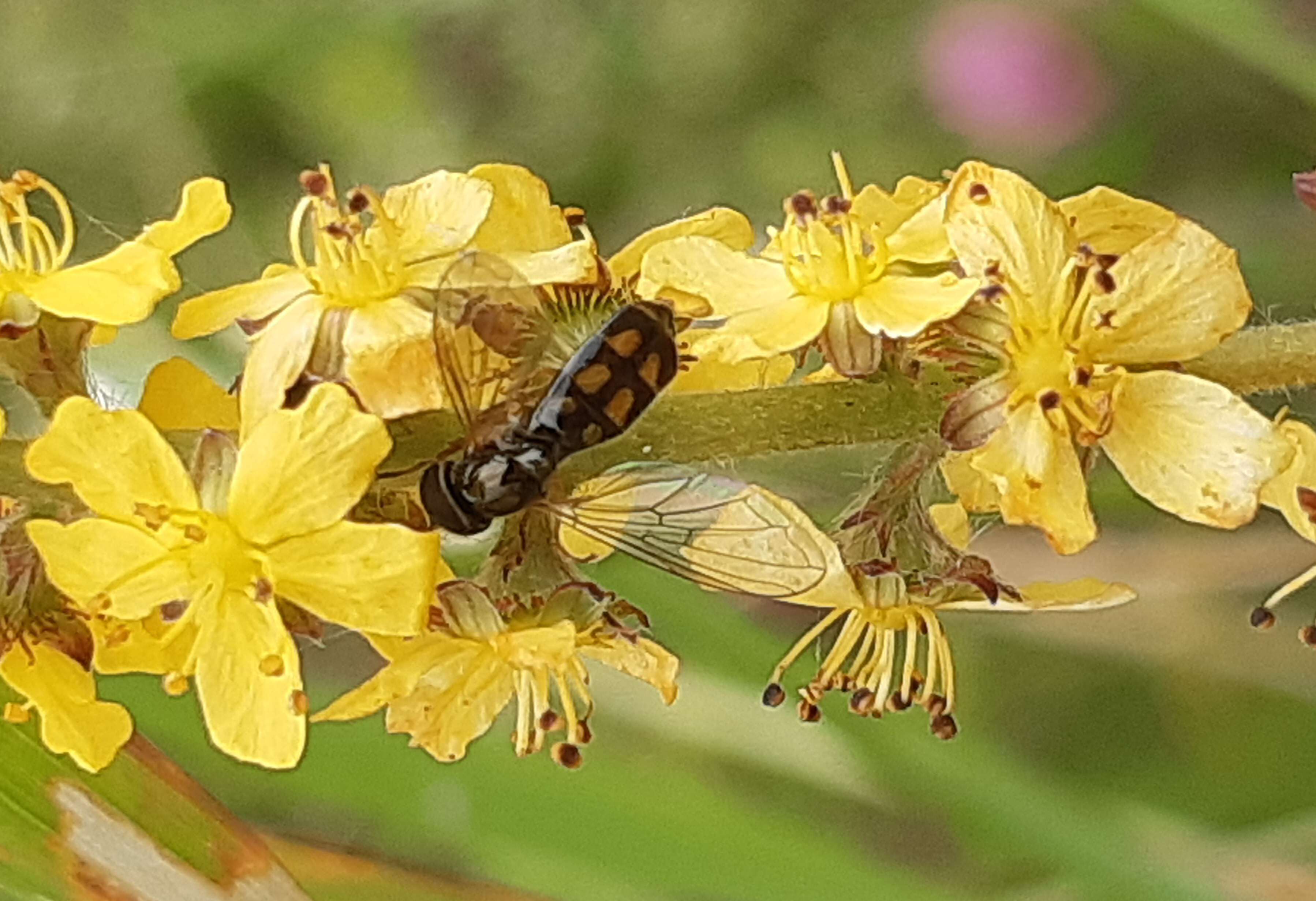
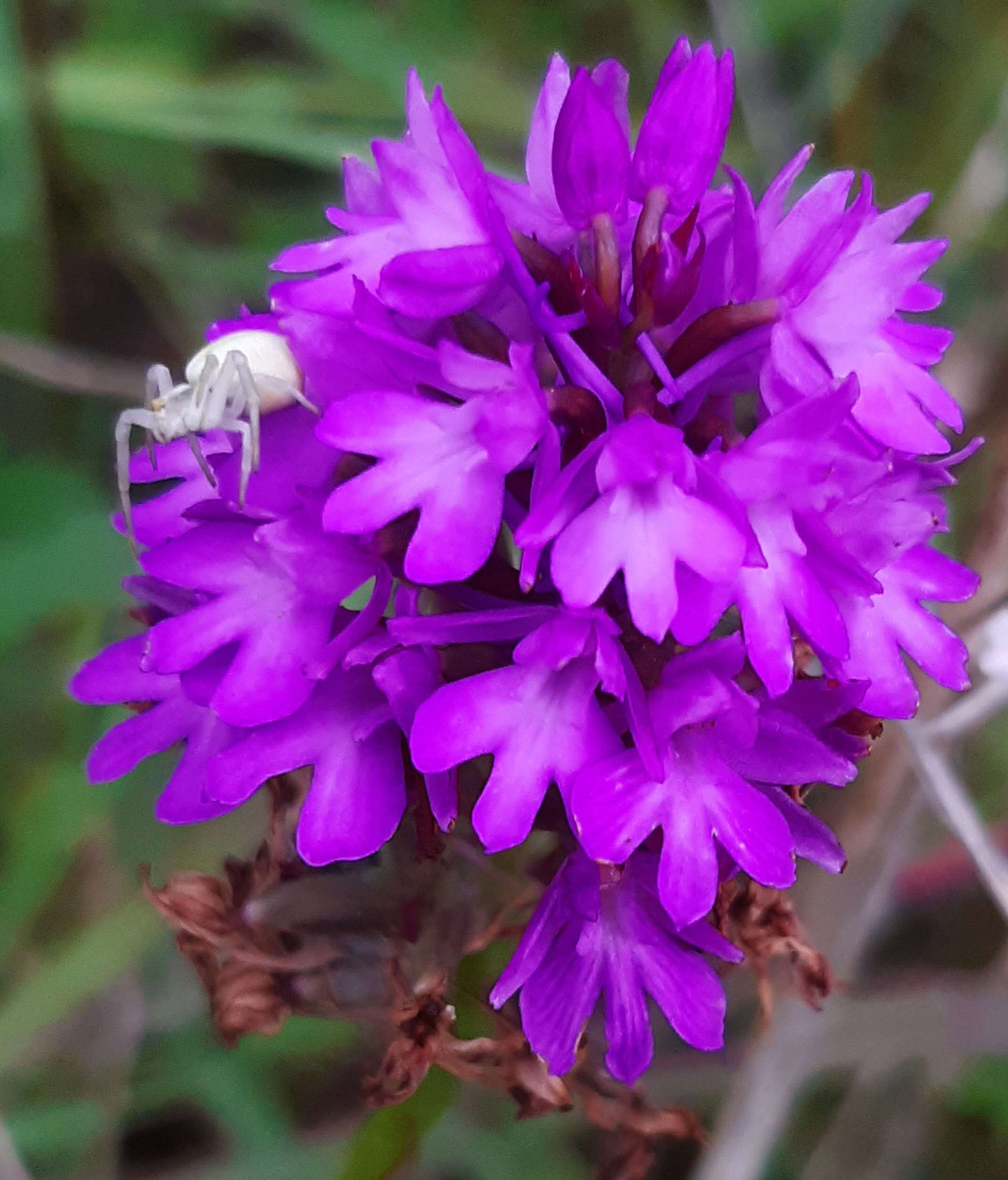
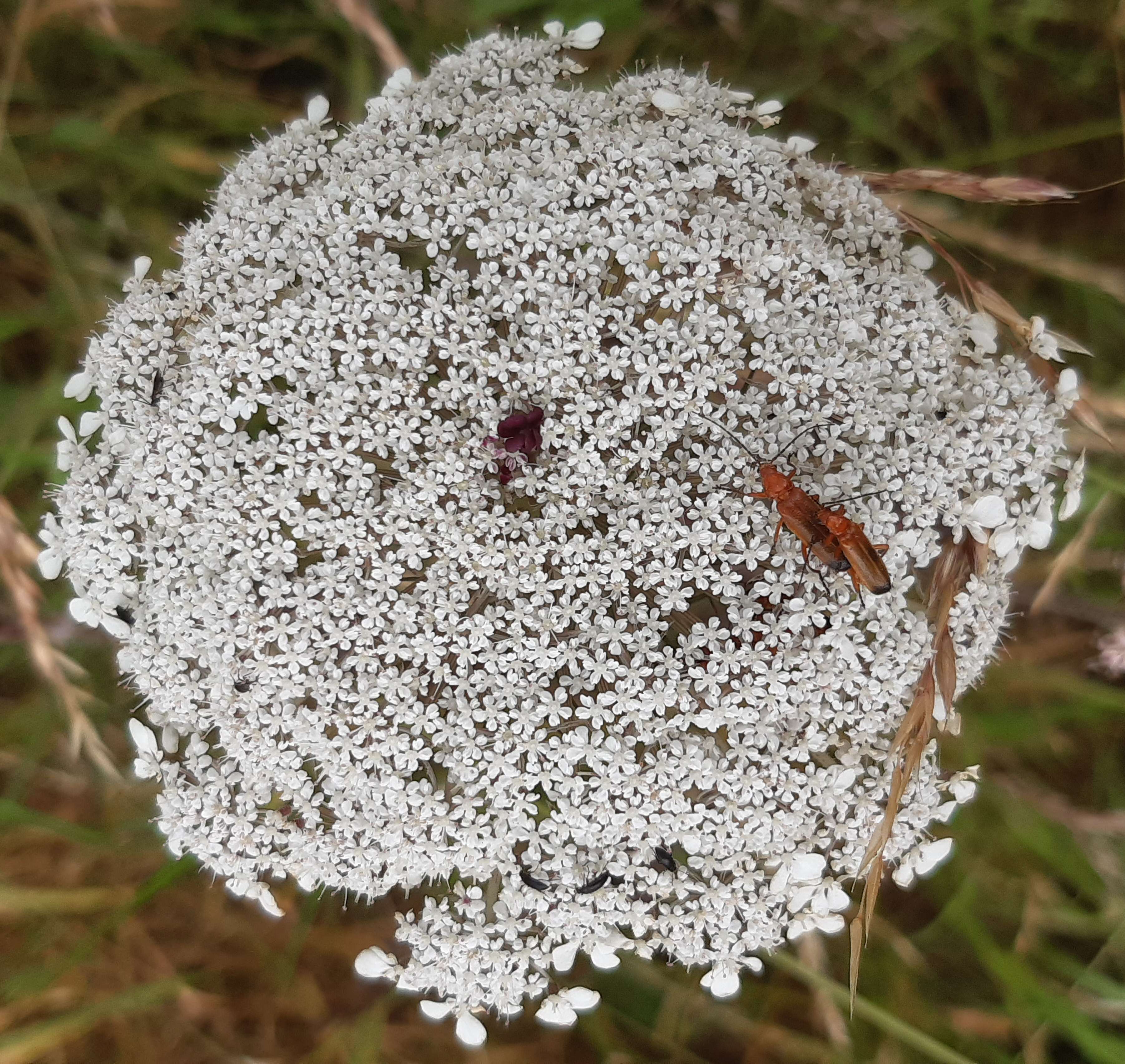
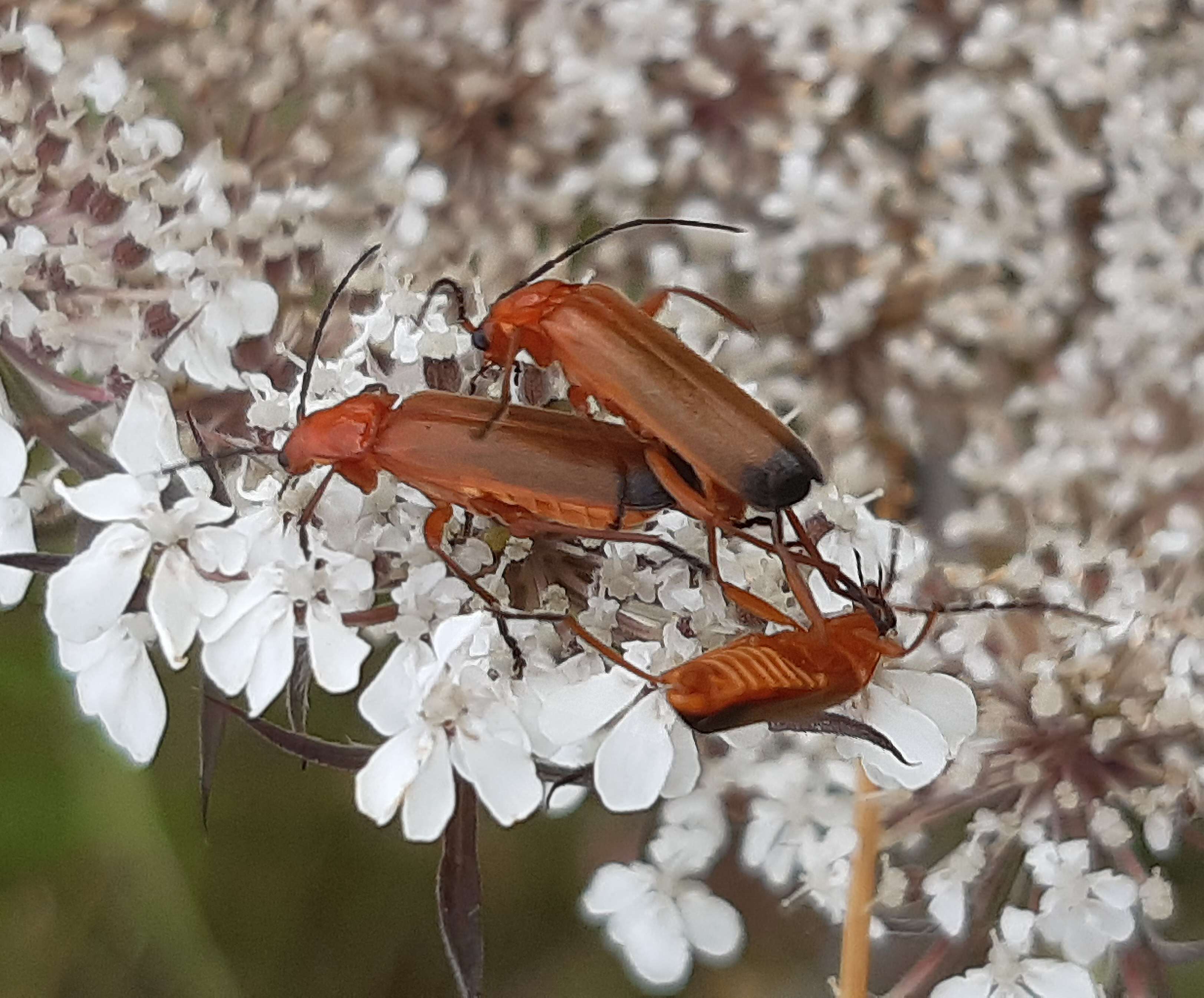
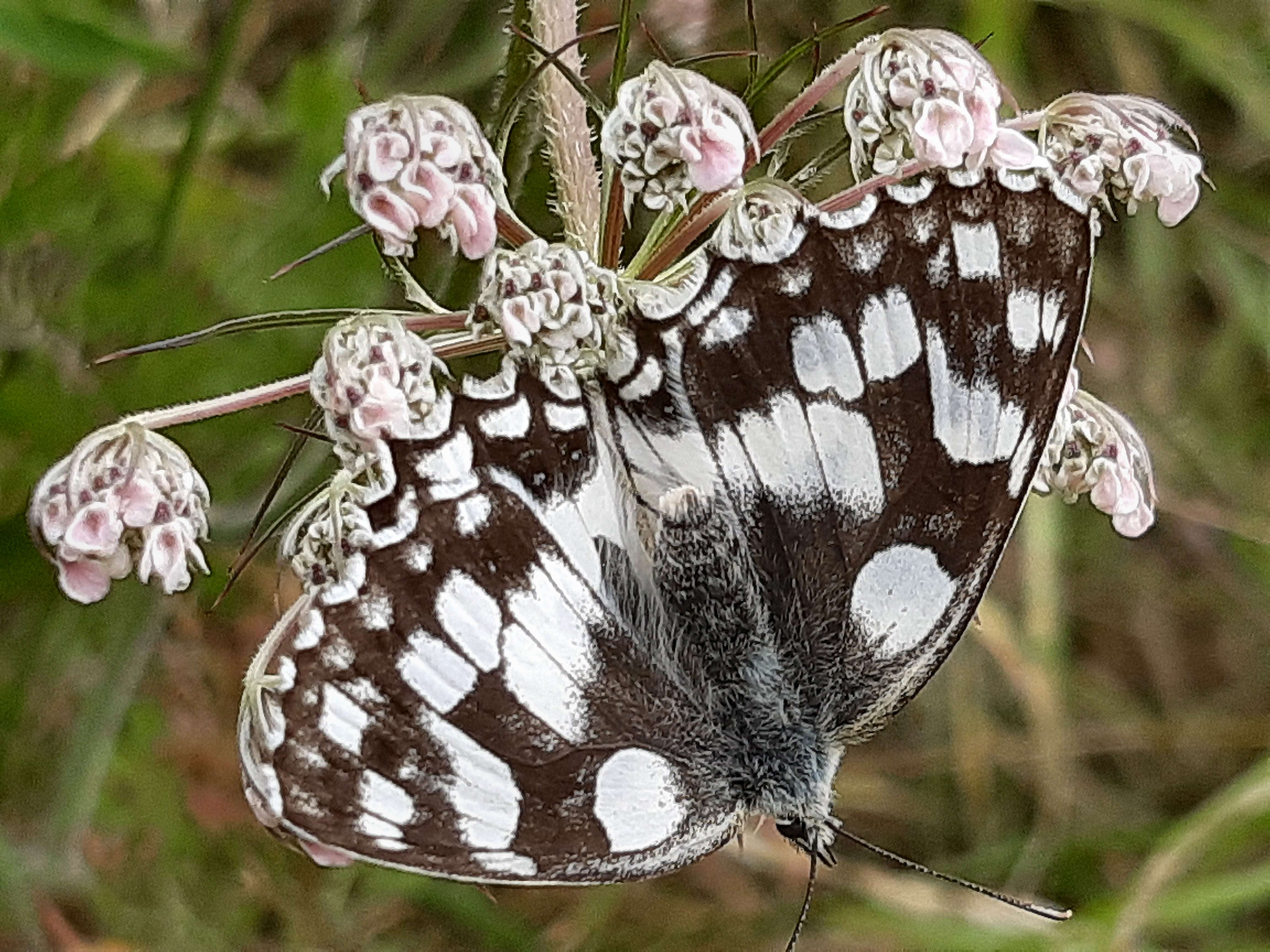
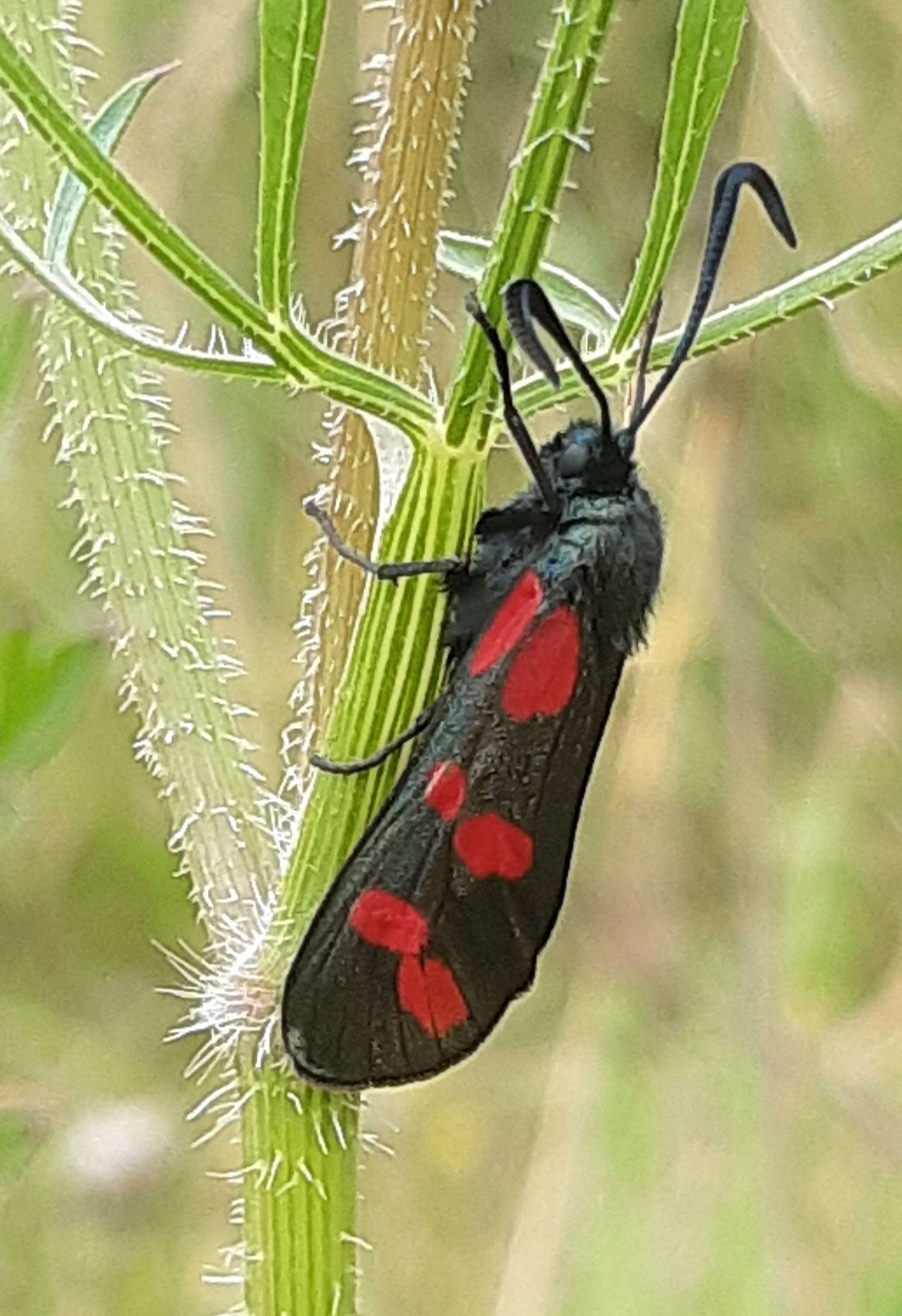

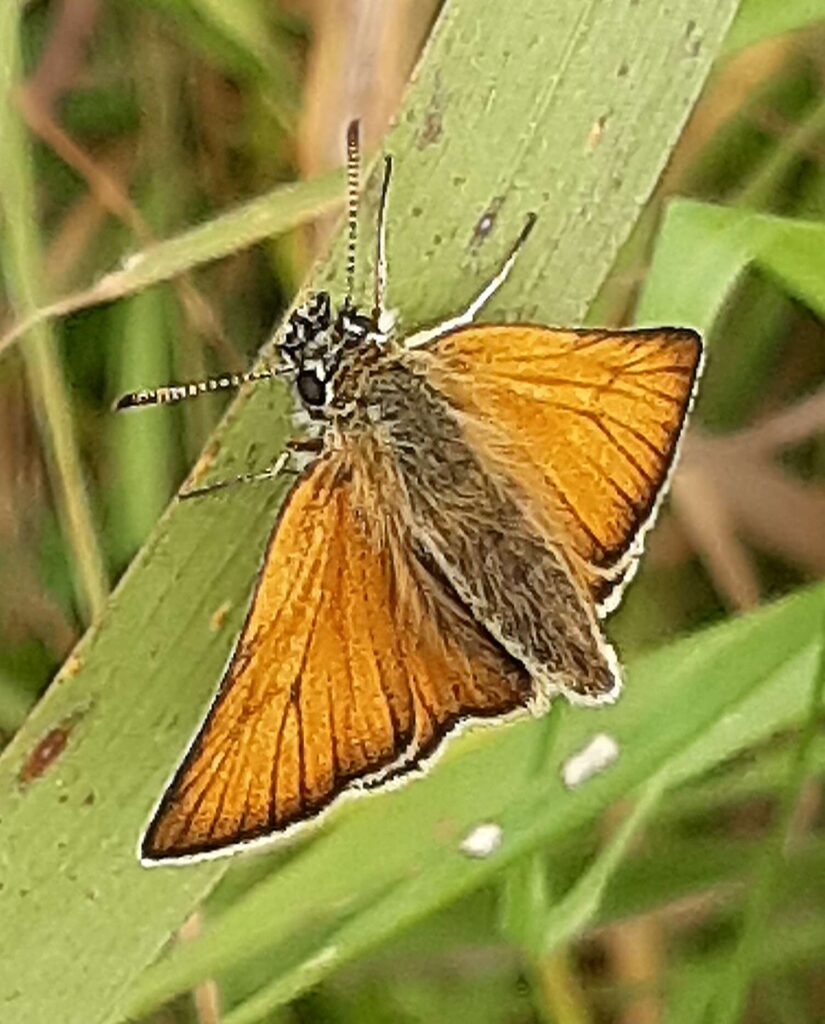
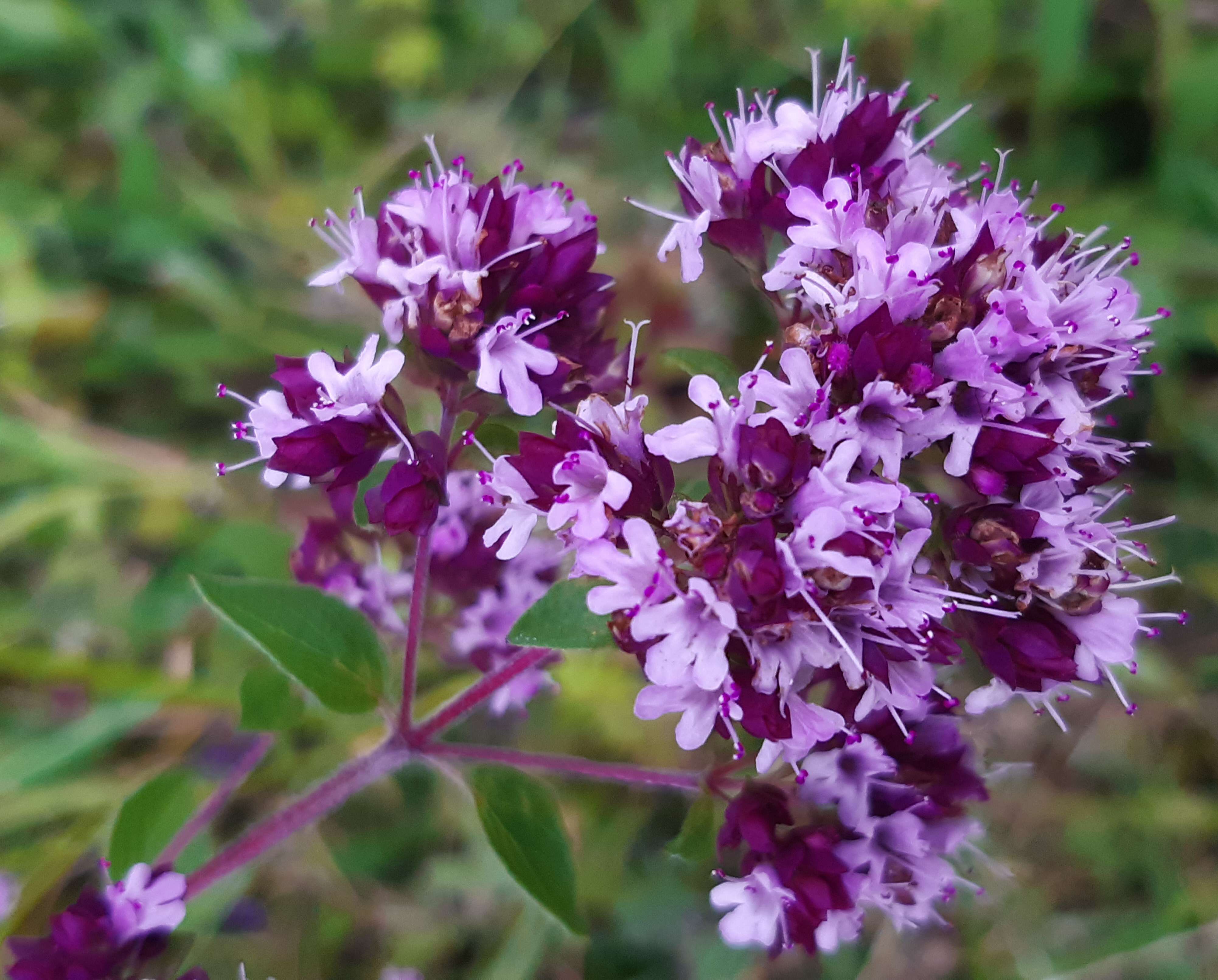
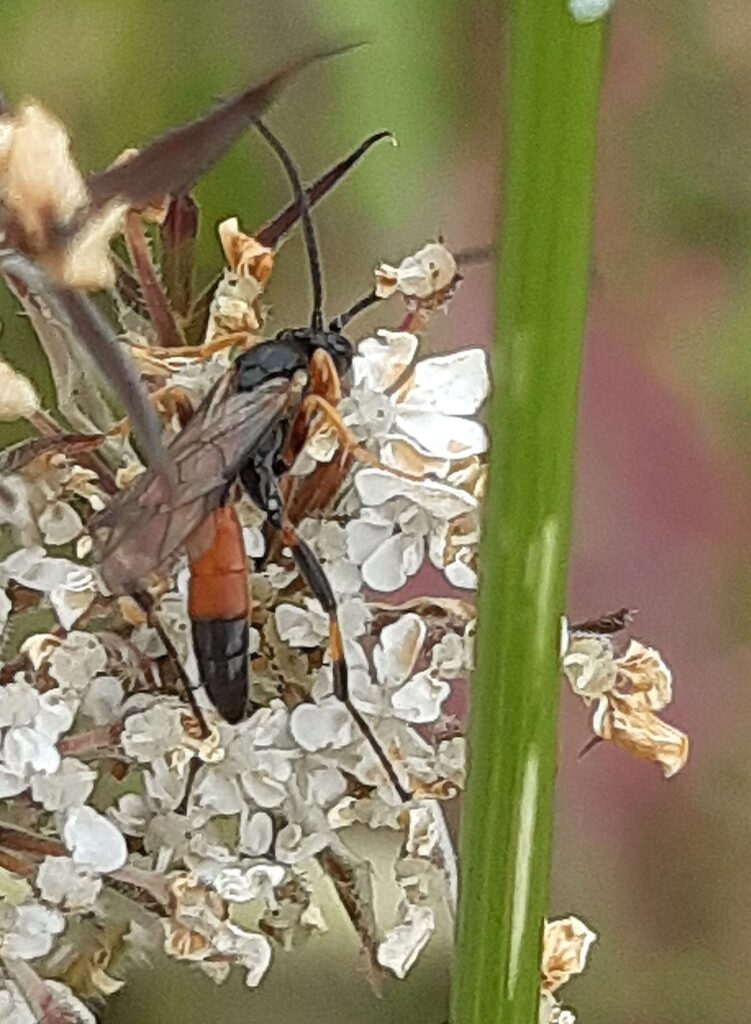
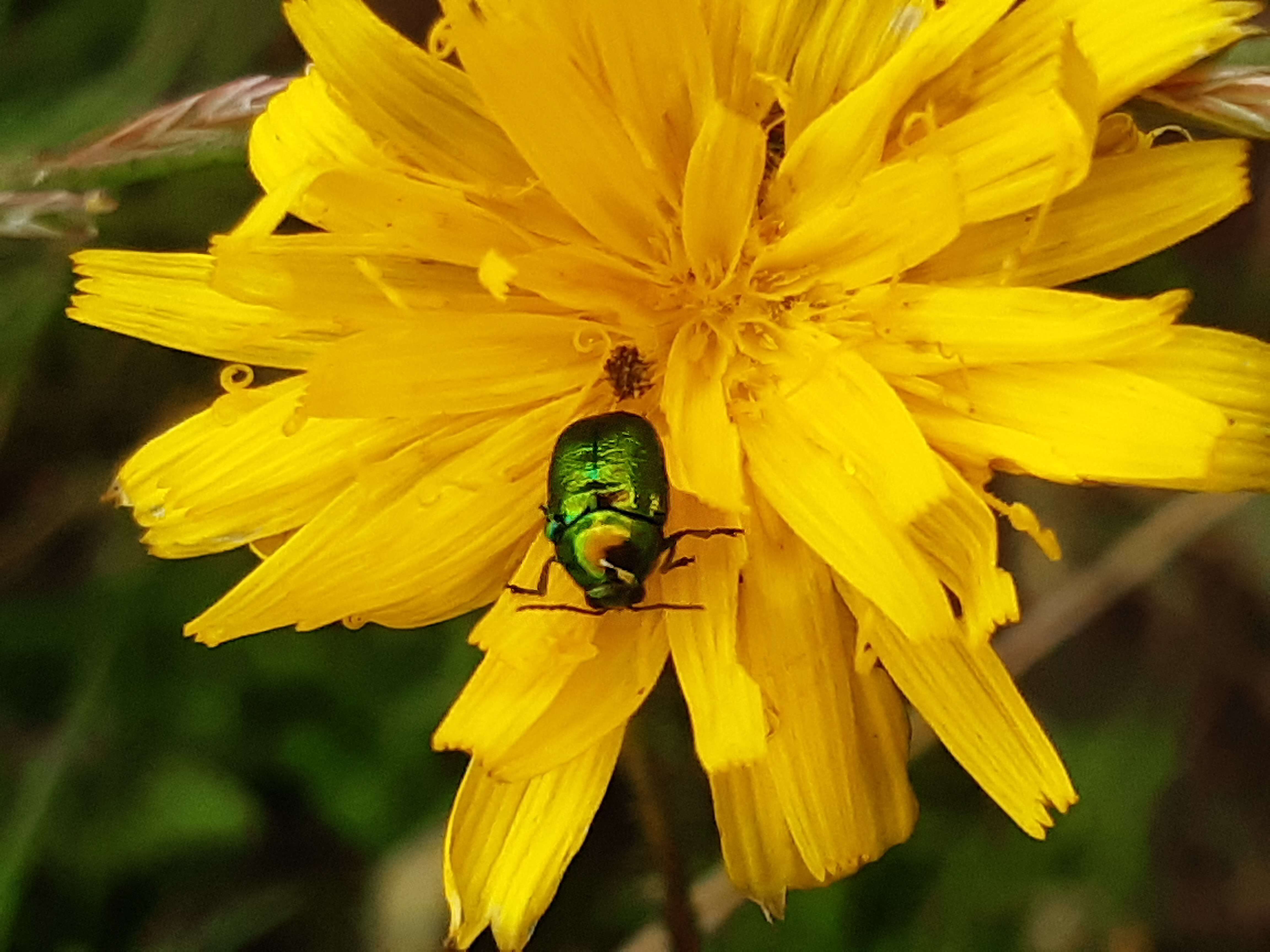
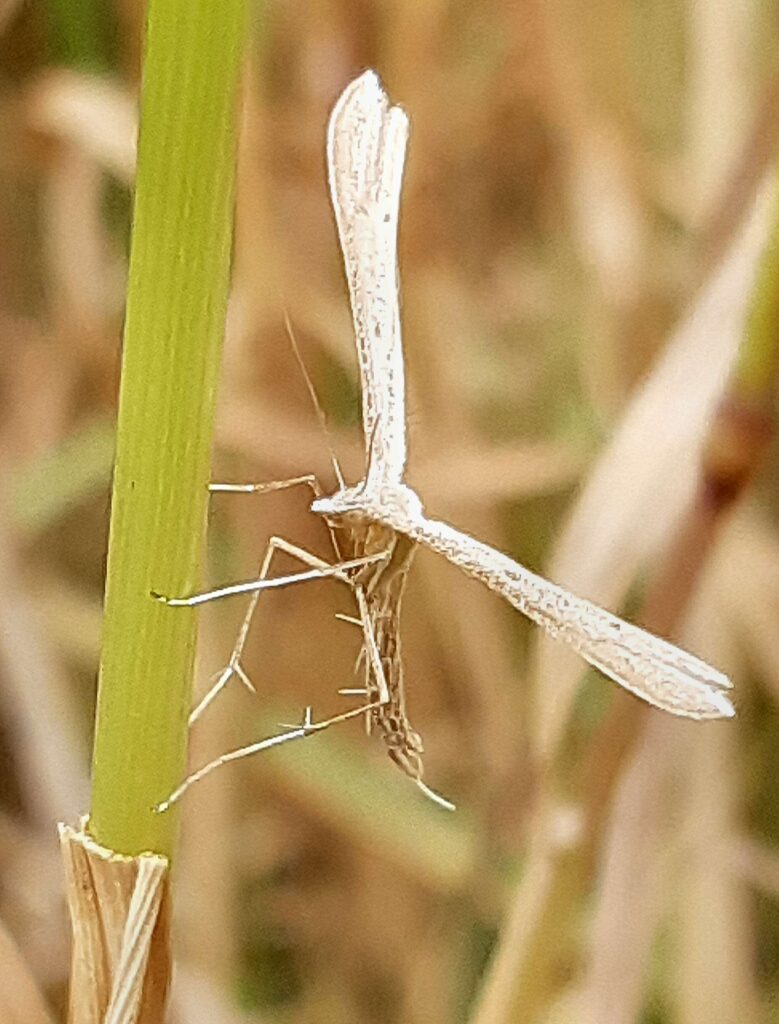
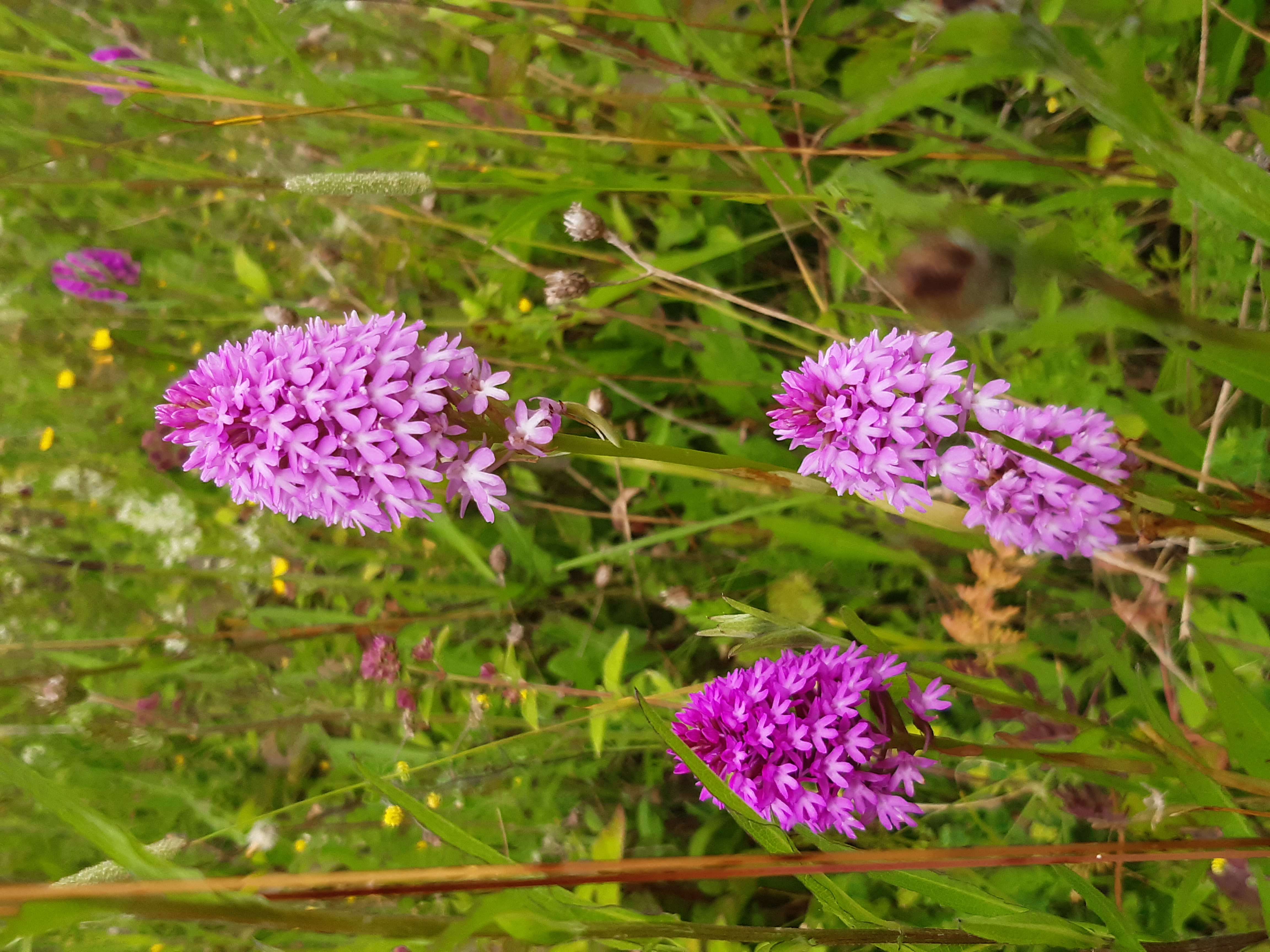
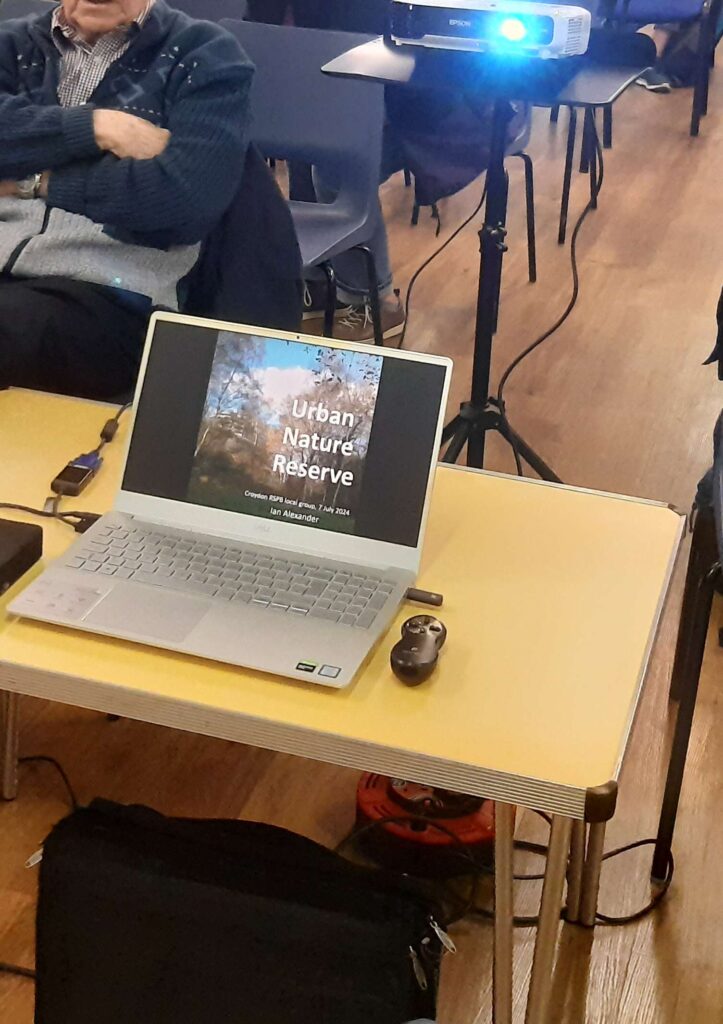
















An extremely slim-winged Plume Moth landed on the kitchen window and has rested there for some hours, in broad daylight. I was familiar with the distinctive White Plume Moth, Pterophorus pentadactyla, a ghostly little moth with thin, branched, feathery wings – never understood the ‘penta-dactyla’, (‘five-fingered’) as I’d make it many, or perhaps two, but certainly the wings are oddly subdivided. This moth was obviously something in the same family (Pterophoridae) but another species, and given its brownish colour, it must be very inconspicuous among vegetation or on bark.
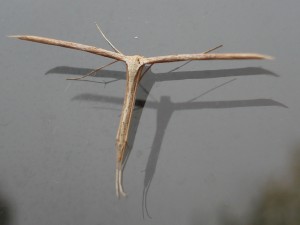
The excellent British Moths and Butterflies: A Photographic Guide by Chris Manley 2008, reprinted 2011 by Bloomsbury ( Amazon.com, Amazon.co.uk), quickly pointed to a species of Stenoptilia: there are several similar and hard-to-tell species, so I wouldn’t presume to say which one it is, but it is most like Stenoptilia bipunctidactyla. The photo shows the family’s distinctive T-shape, and the long thin whitish legs with spines. The back is dotted, and the wingtips lack white, which is why I’m guessing it’s something like this species. It’s said to be common throughout Britain, eating Scabious.